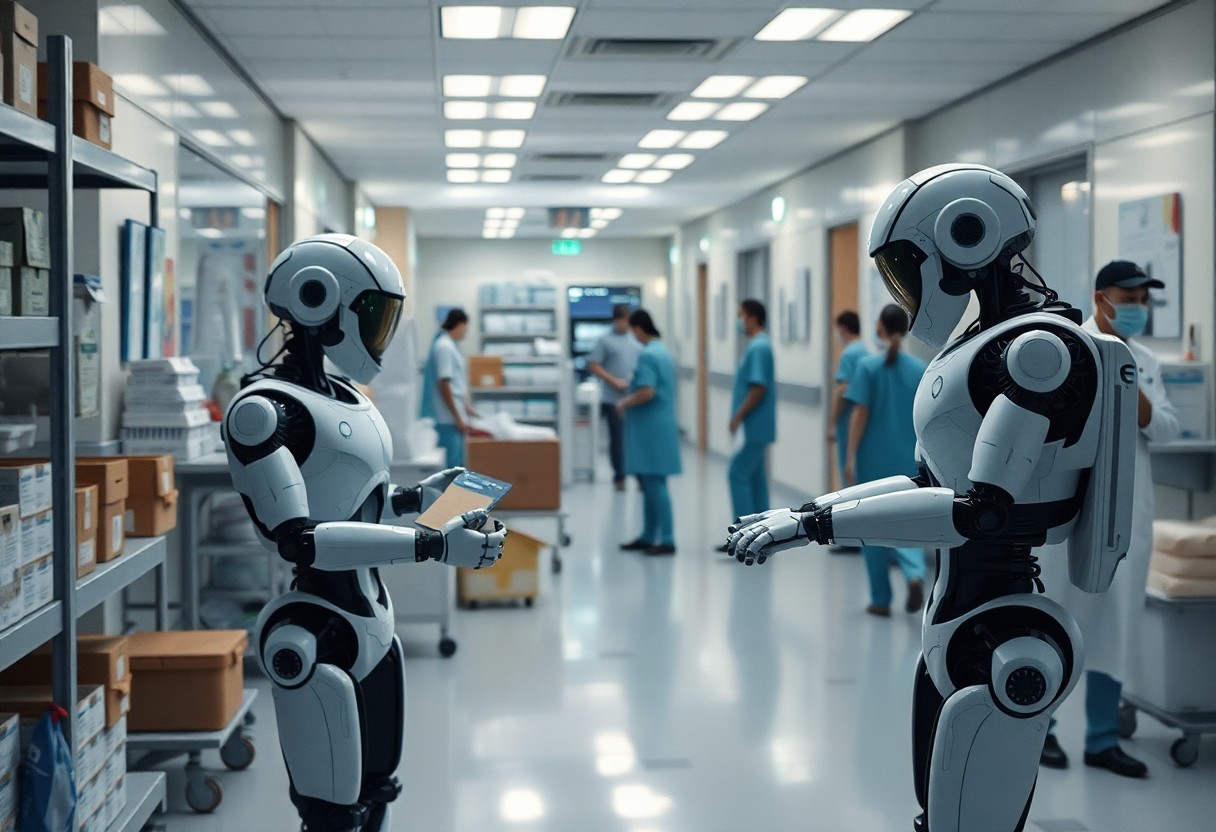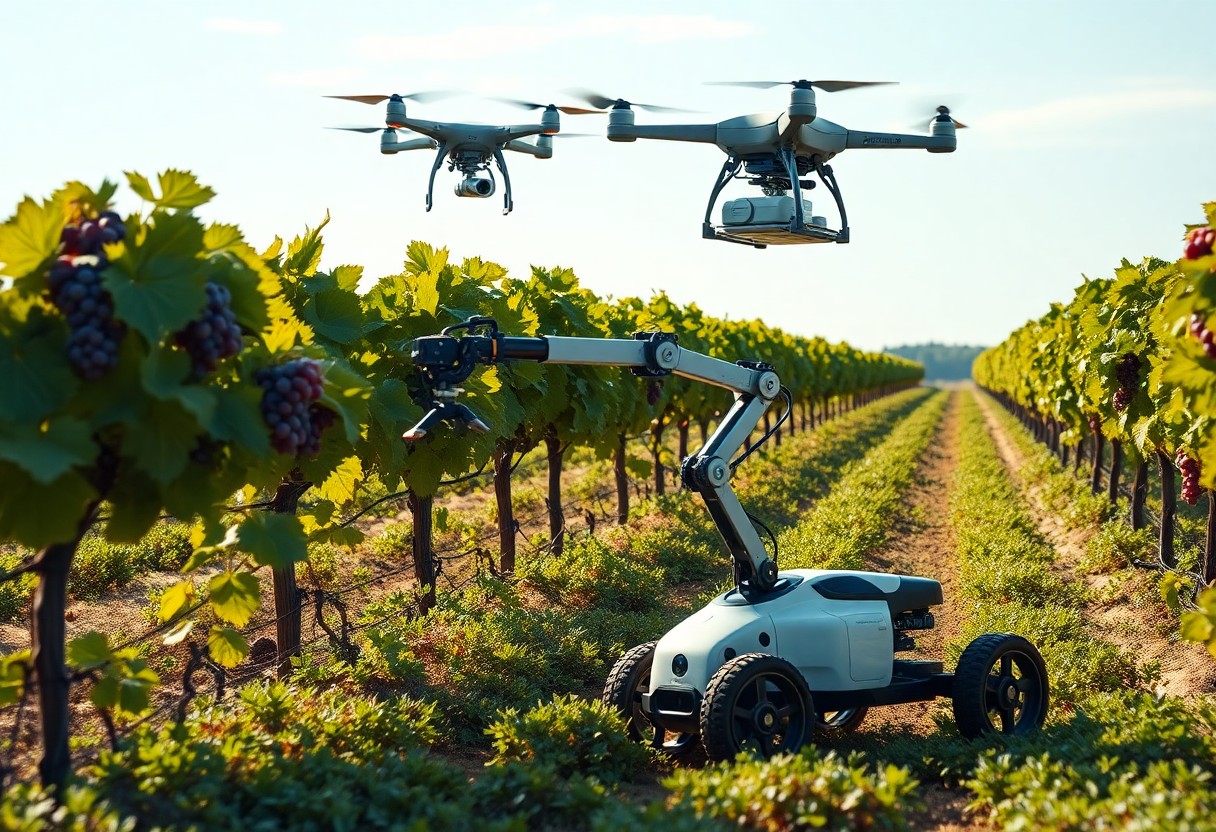There’s a growing trend in healthcare where mechanized assistants are redefining how hospitals function, streamlining operations to enhance patient care. By integrating robotic systems and automated solutions into daily workflows, you can significantly reduce administrative burdens, optimize resource allocation, and improve overall service delivery. This blog post will explore the various ways mechanized assistants contribute to operational efficiency in hospitals, ultimately leading to a more effective healthcare environment for both staff and patients. Understanding these advancements is vital for anyone involved in hospital management or patient care.
The Role of Mechanized Assistants in Hospitals
The integration of mechanized assistants in hospitals significantly enhances operational efficiency. These advanced technologies streamline workflow, reduce administrative burdens, and allow healthcare professionals to focus on patient care. By handling routine tasks such as inventory management, patient scheduling, and data entry, mechanized assistants become valuable allies in improving overall hospital performance.
Types of Mechanized Assistants
- Robotic surgical systems
- Automated medication dispensers
- AI-driven chatbots for patient inquiries
- Logistics and supply chain robots
- Telepresence robots for remote consultations
Any of these types can contribute to a more effective hospital environment.
| Type | Function |
| Robotic surgical systems | Aid in precision surgeries |
| Automated medication dispensers | Ensure accurate medication distribution |
| AI-driven chatbots | Provide instant patient communication |
| Logistics robots | Facilitate supply transportation |
| Telepresence robots | Enable remote patient consultations |
Integration with Existing Systems
Between the various functionalities of hospital operations, integrating mechanized assistants with your existing systems becomes crucial for maximizing their potential. Seamless integration helps eliminate silos in information sharing, ensuring that patient data and operations are cohesive and readily accessible.
Assistants not only work alongside your current technology but can also enhance data analytics and reporting capabilities. By connecting mechanized assistants to Electronic Health Records (EHR) and other management systems, you can achieve a streamlined workflow. This integration empowers healthcare workers and provides them with a complete view of patient care, ultimately leading to better treatment outcomes and improved efficiency in your hospital operations.
Enhancing Workflow Efficiency
One of the key benefits of mechanized assistants in hospitals is their ability to enhance workflow efficiency. By integrating these tools into your daily operations, you can streamline processes, minimize bottlenecks, and ensure that staff spends more time on patient care rather than administrative tasks. The result is a smoother, more effective operation where every member of the healthcare team can focus on their primary responsibilities, ultimately contributing to better patient outcomes.
Task Automation
Automation of routine tasks is one of the most impactful functions of mechanized assistants. By taking over repetitive and time-consuming responsibilities, these systems allow you and your staff to reallocate time and energy towards more complex and patient-centered activities. This shift not only boosts productivity but also ensures that all tasks are executed consistently and efficiently.
Reducing Human Error
About the potential for reducing human error, mechanized assistants provide your organization with tools designed to enhance accuracy in every operation. By handling tasks such as data entry, scheduling, and medication management, these systems enable you to minimize mistakes that can lead to adverse patient outcomes.
For instance, when it comes to medication management, mechanized assistants can cross-reference prescribed drugs against patient records to identify potential interactions or allergies. This capability not only safeguards against human oversight but also ensures that your medical staff has immediate access to vital information. By entrusting routine, error-prone tasks to automation, you create a more reliable healthcare environment where patient safety remains a top priority.
Impact on Patient Care
You will find that mechanized assistants significantly enhance the quality of patient care within hospital settings. By streamlining processes, they facilitate quicker decision-making and ensure that healthcare professionals can focus on delivering personalized attention to patients. This technology not only alleviates administrative burdens but also promotes a seamless healthcare experience, ultimately benefiting patient outcomes.
Improved Response Times
Any delay in hospital operations can impede patient care. With mechanized assistants managing routine tasks, healthcare staff can respond to patient needs more swiftly, ensuring timely interventions and improving overall care quality. The rapid mobilization of resources allows for a more efficient response to emergencies, significantly enhancing patient safety and satisfaction.
Personalization of Services
Among the benefits that mechanized assistants offer is the ability to tailor services to individual patient needs. By collecting and analyzing patient data, these tools facilitate a more customized approach to care, allowing healthcare professionals to focus on what matters most for each patient’s unique circumstances.
This personalized approach fosters a stronger connection between healthcare providers and patients, leading to higher satisfaction levels. As mechanized assistants gather insights from patient interactions, they enable healthcare teams to anticipate needs and preferences, resulting in a more holistic treatment plan. This not only enhances patient engagement but also empowers you to take an active role in your healthcare journey, transforming the patient experience for the better.
Cost-Effectiveness of Mechanized Assistants
After assessing the integration of mechanized assistants in hospital operations, you will find that their implementation significantly contributes to cost-effectiveness. By automating routine tasks and streamlining workflows, these technologies reduce labor costs and minimize the likelihood of errors. As a result, your hospital can allocate resources more efficiently, fostering both operational resilience and financial stability.
Operational Savings
Beside the reduced labor expenses, mechanized assistants generate operational savings by optimizing resource allocation. You will be able to minimize waste and improve inventory management, ensuring that supplies meet demand without overstocking, leading to significant long-term cost reductions in your hospital’s operations.
Return on Investment
Among the many advantages of mechanized assistants, a key benefit is the strong return on investment. You will quickly notice that the initial costs of adopting these technologies are outweighed by the long-term financial benefits, driven by increased productivity and efficiency gains across various departments.
Investment in mechanized assistants ultimately serves as a strategic decision that enhances your hospital’s operational capabilities. You can expect tangible gains such as enhanced patient throughput and reduced waiting times, which correlate directly to increased patient satisfaction and revenue. By prioritizing this investment, you position your hospital to thrive in a competitive healthcare landscape while ensuring optimal care delivery.
Challenges in Implementation
Once again, integrating mechanized assistants into hospital operations presents various challenges. You may encounter resistance from staff who are accustomed to traditional methods, as well as budget constraints that limit the acquisition of advanced technology. Furthermore, the diverse range of hospital departments can complicate the implementation process, necessitating tailored solutions that cater to each area’s specific needs. Ensuring alignment between the existing workflows and new mechanized systems is vital to overcoming these obstacles.
Training and Adaptation
Between adopting new technologies and training your staff, the learning curve can pose a significant challenge. It’s vital that you prioritize comprehensive training programs to familiarize your team with the mechanized assistants, ensuring they feel competent and confident in their use. This adaptability will streamline operations and promote a smoother transition to the enhanced systems.
Technology Limitations
After all, your mechanized assistants have constraints that can affect their effectiveness. While these technologies can significantly reduce workload, they may not be able to handle every scenario or adapt to real-time changes swiftly. Understanding these limitations is vital for leveraging their full potential within your hospital’s environment.
At times, the ability of mechanized assistants to integrate seamlessly with existing systems may be limited. You might experience compatibility issues with legacy software or encounter delays in processing data. Additionally, the lack of real-time decision-making abilities can hinder their effectiveness in urgent situations, placing a greater reliance on human staff. Being aware of these limitations empowers you to devise strategies to mitigate their impact and maximize the benefits of mechanized assistants in your hospital operations.
Future Trends in Mechanized Assistance
To stay competitive, hospitals are increasingly adopting mechanized assistants, which are evolving rapidly. You can expect advancements in artificial intelligence and machine learning that will enhance decision-making processes, automate routine tasks, and ultimately improve patient care. These trends will not only streamline operations but will also lead to better resource allocation, enhancing overall efficiency in healthcare settings.
Innovations on the Horizon
Future breakthroughs in robotic technology and automation are set to redefine the landscape of hospital operations. You will likely see more sophisticated robots equipped with advanced analytics that can assist in various tasks, from surgical support to patient interaction, thereby alleviating the burden on healthcare providers.
Expanding Applications in Healthcare
Behind the scenes, mechanized assistants are becoming integral to a broader range of healthcare applications. You may find them in telemedicine, enabling remote consultations, or in supply chain management, ensuring timely delivery of medicines and equipment. This expanded scope not only meets immediate operational needs but also opens new avenues for patient engagement and service delivery.
Horizon scanning reveals that the future of healthcare will be heavily influenced by the expanding applications of mechanized assistants. You can anticipate that these systems will integrate seamlessly with electronic health records and patient management systems, creating a cohesive workflow. This integration enables faster responses to patient needs and enhances the quality of care provided. As technology continues to advance, your role may evolve to leverage these innovations for improved patient outcomes and operational excellence.
To wrap up
Conclusively, mechanized assistants enhance your hospital’s efficiency by streamlining operational processes, reducing wait times, and minimizing human error. By automating routine tasks, these technologies allow your staff to focus on patient care, thus improving overall service delivery. Moreover, real-time data analytics from mechanized systems empower you to make informed decisions, optimize resource allocation, and elevate patient satisfaction. Embracing these innovations not only boosts your hospital’s productivity but also fosters a more responsive and adaptable healthcare environment.







